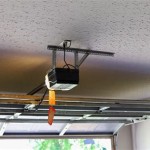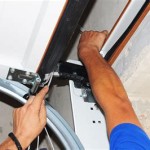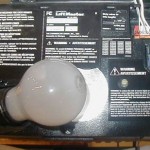How to Size a Heater for a Garage
Determining the appropriate size of a heater for a garage is crucial for ensuring a comfortable and functional workspace, particularly in colder climates. An undersized heater will struggle to maintain a desired temperature, while an oversized heater can lead to inefficient energy consumption and temperature fluctuations. The process involves calculating the garage's heating needs based on its dimensions, insulation, climate, and intended use.
Successfully sizing a garage heater requires careful consideration of several factors. Ignoring these factors can lead to significant discomfort and increased energy costs. This article provides a comprehensive guide to accurately calculate the heating requirements for a garage and select a heater that meets the specific needs of the space.
Calculating the Garage's Volume
The initial step involves determining the total cubic footage of the garage. This calculation is fundamental because it provides a baseline measurement for understanding the space that needs to be heated. To calculate the volume, measure the length, width, and height of the garage in feet. Multiply these three dimensions together: Length x Width x Height = Volume (in cubic feet). For example, a standard two-car garage might be 22 feet long, 20 feet wide, and 8 feet high. The volume would then be 22 x 20 x 8 = 3520 cubic feet.
If the garage has an irregular shape, such as an angled roof or an alcove, divide the space into smaller, more manageable sections. Calculate the volume of each section separately and then add the individual volumes together to obtain the total garage volume. Accurate measurement is essential for this calculation to ensure the subsequent heating calculations are precise.
In situations where the garage is attached to a house, consider whether the shared wall is insulated. An uninsulated shared wall will contribute to heat loss from the house into the garage, potentially affecting the heating requirements of both spaces. This factor should be weighed when determining the overall insulation quality of the garage.
Determining the Required BTU Output
British Thermal Units (BTUs) are a standard unit of measurement for heat output. Calculating the required BTU output for the garage is essential to select a heater that can effectively raise the temperature. This calculation depends on the desired temperature increase and the garage's insulation level. A general rule of thumb is to use a BTU factor based on the temperature difference (how much you want to raise the temperature) and then adjust that number based on insulation conditions.
First, determine the desired temperature increase. This is the difference between the average minimum winter temperature in the area and the desired temperature inside the garage. For example, if the average minimum winter temperature is 20°F and the desired garage temperature is 60°F, the temperature increase is 40°F.
Next, consider the insulation level:
- Well-Insulated Garage: Walls and ceiling are insulated with a minimum of R-13 insulation, windows are double-paned, and doors are weather-stripped. Use a BTU factor of 5 to 6 BTUs per cubic foot.
- Moderately Insulated Garage: Walls may have some insulation, but the ceiling may not, and windows are single-paned. Use a BTU factor of 7 to 8 BTUs per cubic foot.
- Poorly Insulated Garage: Little to no insulation in the walls or ceiling, single-paned windows, and gaps around doors. Use a BTU factor of 9 to 10 BTUs per cubic foot.
Multiply the garage's cubic footage by the appropriate BTU factor. Using the previous example of a 3520 cubic foot garage and assuming moderate insulation (a BTU factor of 7), the required BTU output would be 3520 x 7 = 24,640 BTUs. This figure represents the approximate heating power required to maintain the desired temperature in the garage.
It is important to note that this calculation provides an estimate. Factors such as frequent opening and closing of the garage door, drafts, and the presence of thermal bridges can affect the actual heating requirements. It is generally recommended to slightly overestimate the BTU requirement to ensure adequate heating capacity.
Factoring in Insulation and Other Considerations
Insulation plays a pivotal role in determining the heater size. A well-insulated garage will retain heat more effectively, requiring a smaller heater compared to a poorly insulated garage. Insulating the walls, ceiling, and garage door can significantly reduce heat loss and lower the required BTU output. Before investing in a heater, consider upgrading the garage's insulation to improve energy efficiency and potentially reduce the necessary heater size.
In addition to insulation, other factors can influence the garage's heating needs. These include the climate in the area, the frequency of garage door openings, and the presence of any heat-generating equipment. Colder climates will naturally require heaters with higher BTU outputs. Frequent garage door openings allow cold air to enter, necessitating additional heating to compensate. The presence of equipment that generates heat, such as welding machines or kilns, can reduce the heater's workload.
The intended use of the garage also impacts heater selection. If the garage is used solely for storage and occasional vehicle maintenance, a lower temperature may be acceptable, reducing the required BTU output. However, if the garage is used as a workshop or hobby space where comfort is essential, a higher temperature is necessary, increasing the BTU requirement. Consider the typical activities performed in the garage and the desired comfort level when sizing the heater.
Furthermore, the type of heater selected can influence the perceived heating effectiveness. Radiant heaters, for example, heat objects directly, providing immediate warmth and are ideal for localized heating. Convection heaters, on the other hand, heat the air in the entire space, requiring a longer warm-up time but providing more consistent heating. Choose a heater type that aligns with the intended use of the garage and the desired heating characteristics.
Drafts can also significantly impact heating efficiency. Seal any cracks or gaps around windows, doors, and other openings to minimize heat loss. Weatherstripping and caulking can effectively reduce drafts and improve the overall insulation of the garage. Addressing drafts not only improves heating efficiency but also reduces energy consumption and lowers heating costs.
For garages with high ceilings, consider using a fan to circulate warm air from the ceiling down to the floor level. Warm air naturally rises, leaving the floor area colder. A fan can help distribute the warm air more evenly throughout the space, improving comfort and reducing the heater's workload. Ceiling fans or strategically placed portable fans can be effective in achieving this.
When selecting a heater, consider its safety features. Look for heaters with built-in safety mechanisms such as overheat protection, tip-over switches, and automatic shut-off features. These features can help prevent accidents and ensure safe operation of the heater, especially in a garage environment where flammable materials may be present. Verify that the heater is certified by a recognized testing laboratory, such as UL or ETL, to ensure it meets safety standards.
Finally, consider the heater's fuel source and operating costs. Electric heaters are generally less expensive to purchase but can be more expensive to operate due to higher electricity costs. Propane or natural gas heaters may have a higher initial cost but can be more economical to operate, depending on local fuel prices. Evaluate the long-term operating costs of different heater types before making a decision.
By carefully considering the garage's volume, insulation level, climate, intended use, and other relevant factors, it is possible to accurately determine the required BTU output and select a heater that provides efficient and effective heating for the space. This ensures a comfortable and functional garage environment, regardless of the weather conditions.

How To Choose A Workshop Heater Acme Tools

What Size Heater Do I Need For My Garage Danley S Garages

How To Estimate The Heater Size For A Garage

King Electric How To Size A Garage Heater

Garage Heater Size How Big Do You Need

What Size Heater Do I Need For My Garage

Determining The Right Size Garage Heater Job Heating And Air Conditioning Saskatoon Pros

Select The Right Size Heater For Your Garage Crystal

Garage Heater Size Calculator How Many Btu Do I Need Pickhvac

Garage Unit Heater Sizing 2025 Www Oconnorlawfirm Com








